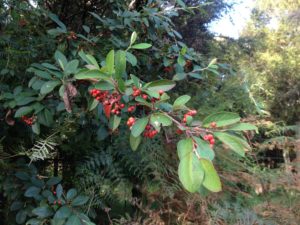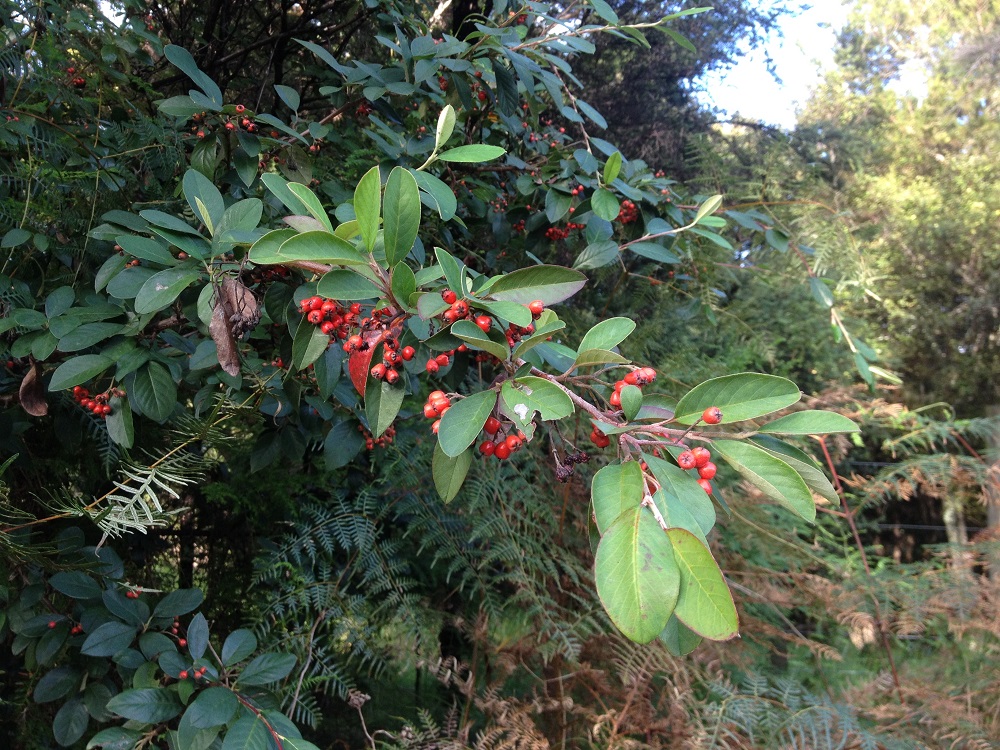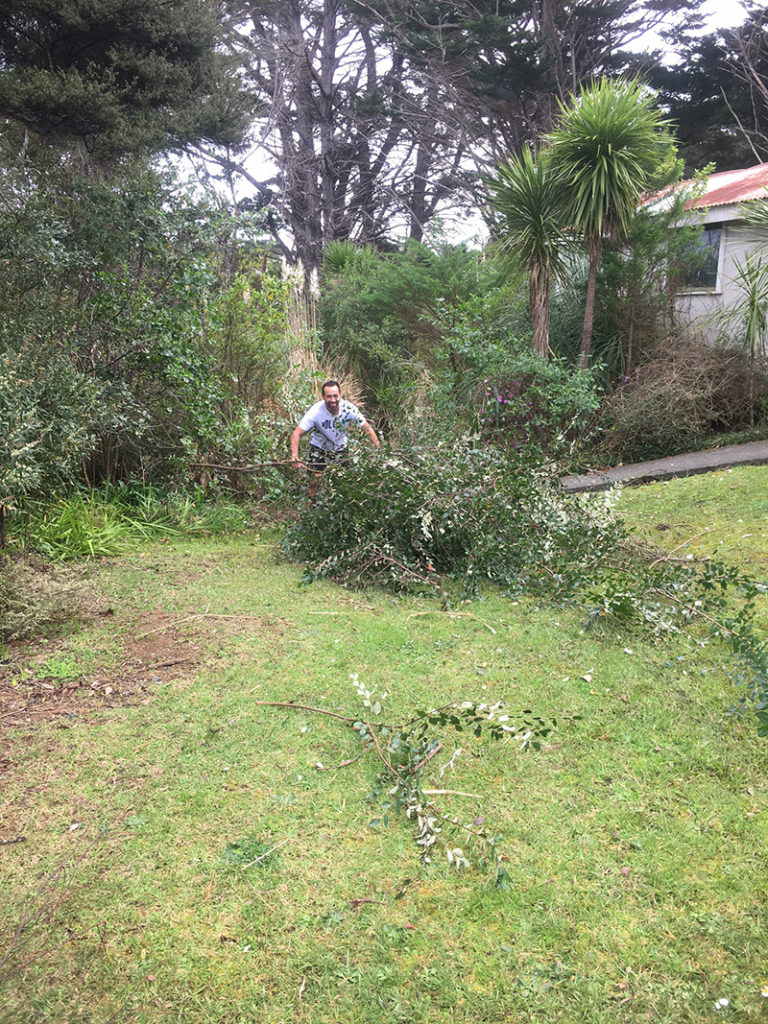 Cotoneaster glaucophyllus
Cotoneaster glaucophyllus
Just want to know how to kill it?
Skip to control methods
What does it look like?
An arching, spreading, evergreen shrub usually less than 3m tall but can grow up to 5m. Cotoneaster has distinctive bunches of small red berries from February to August. Mature cotoneaster leaves (30-70 x 15-35 mm) have impressed veins and are a dull blue/green in colour on both sides, while young leaves are buff-white underneath, with pale downy hairs. The erect young stems are also covered in downy hairs but become hairless and dark reddish-purple when mature. Clusters of 15-60 small white flowers appear from October to January followed by scarlet berries (4-7 mm diameter) from February to August.
Why is it a problem?
It is a direct competitor with native shrub species and can form pure stands in native shrubland, bluffs, and steep and rocky habitats. Produces large amounts of highly viable seed, matures quickly, is very long-lived. Extremely tolerant of damp and drought conditions, hot and cold temperatures, salt, range of soils and semi-shade tolerant.
How does it spread?
Birds distribute seeds widely. Sources of infestations include hedges, roadsides, gardens, quarries, wasteland, and exotic plantations.
How much of it do we have on the Whangarei Heads Peninsula?
Cotoneaster, while quite widespread is not yet in great density in most areas. There is a notable hotspot around Whangarei Heads School, and out toward Pataua.
What can we DO about it at Whangarei Heads?
Cotoneaster is relatively straightforward to control, and is easy to spot and identify when it has its berries.
Check out the control methods below:
How do I control it?
Special identification note: Ensure that the plant being controlled is not the native species kumarahou, which is very similar. The exotic cotoneaster has red berries in winter. The native kumarahou has yellow flowers in spring.
- Hand pull seedlings (can be difficult).
- Cut & stump application: Cut and immediately treat stumps with (5g metsulfuron/1L water) or Picloram gel.
- Frill and fill: Make deep downward cuts into the sapwood around the base of the tree, taking care not to ring bark the plant, and immediately saturate the cuts with (5g metsulfuron/1L water). Wait until the liquid subsides/absorbs and then apply again.
- Drill & fill: Drill (c.12mm drill bit) sloping holes into the sapwood at 10cm intervals around the base of the trunk, & immediately fill each hole with (20g metsulfuron/1L water). Top up all holes after initial fill has absorbed. Undiluted glyphosate can also be used but extra care must be taken when using undiluted herbicide.
- Spray summer – autumn (5g metsulfuron+10ml penetrant/10L water).
Plan to control whole areas to minimise reseeding by birds. Replant bared areas with dense groundcover or shrubs to prevent seedling regrowth. Make sure that the plant being controlled is not the native species kumarahou. The exotic cotoneaster has red berries in winter. The native kumarahou has yellow flowers in spring.
CAUTION: when using any herbicide or pesticide PLEASE READ THE LABEL THOROUGHLY to ensure that all instructions and safety requirements are followed.
Click here for more information on the herbicides referenced in the control methods, or here for more information on the suggested techniques.
Photos of cotoneaster
Save



